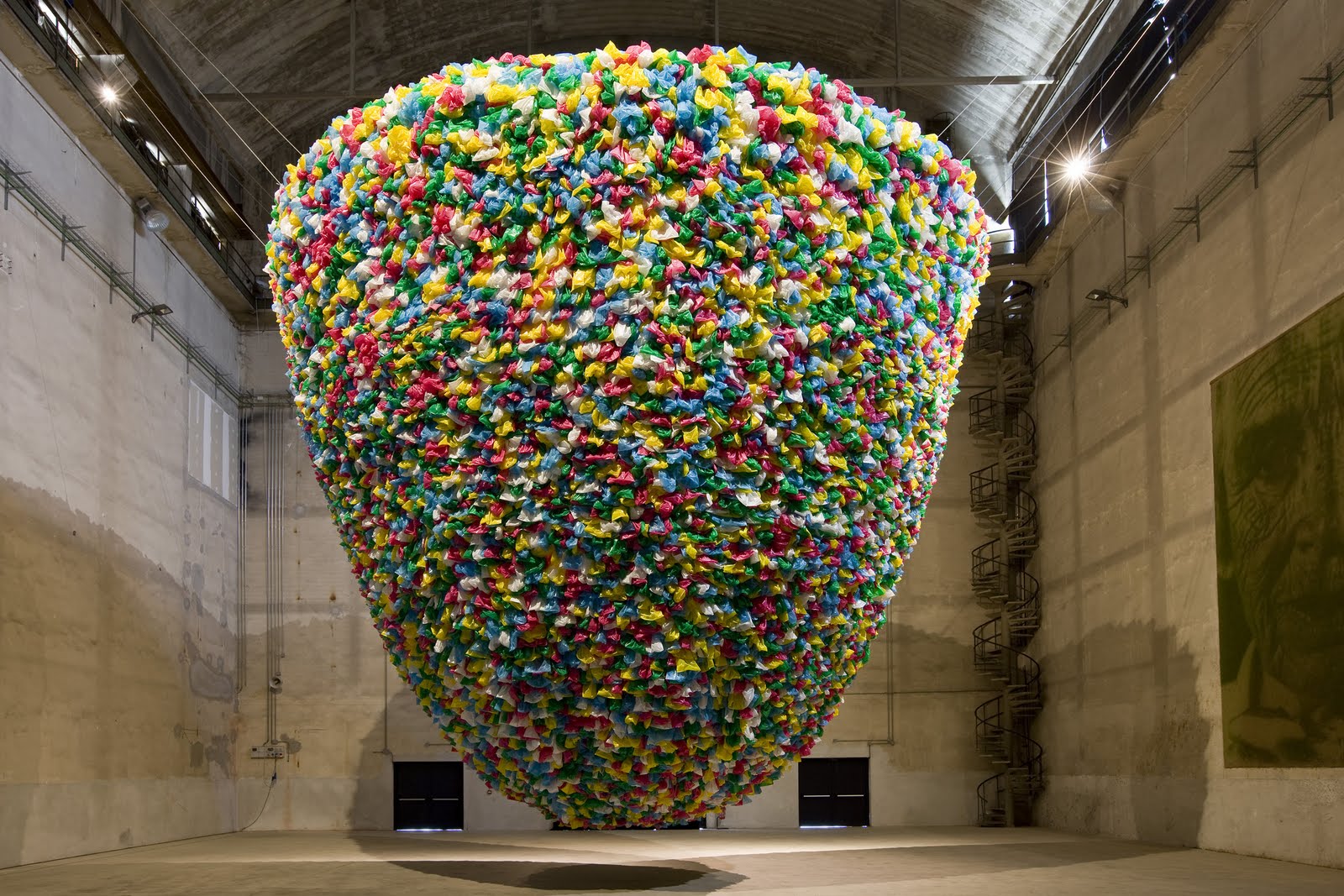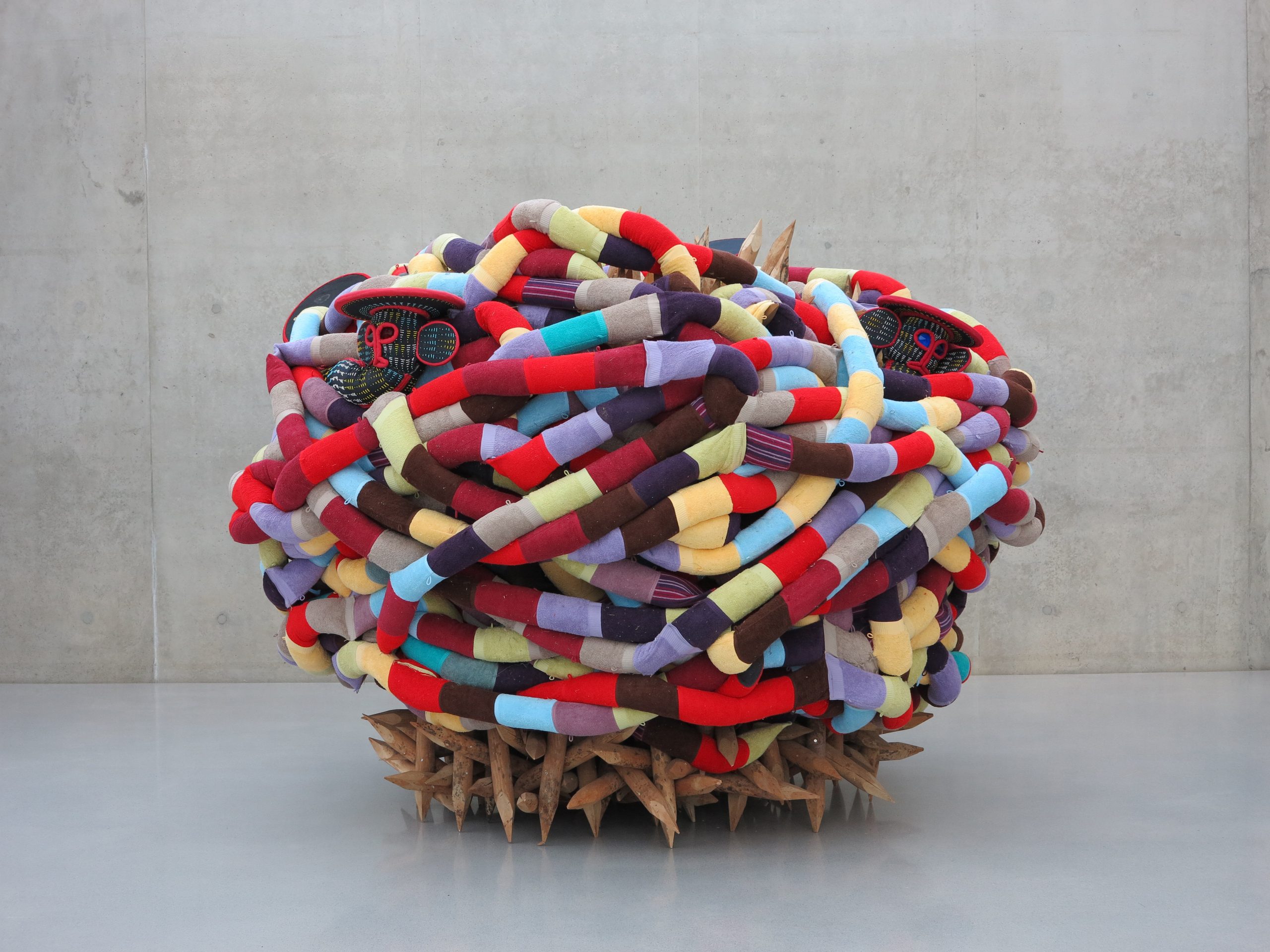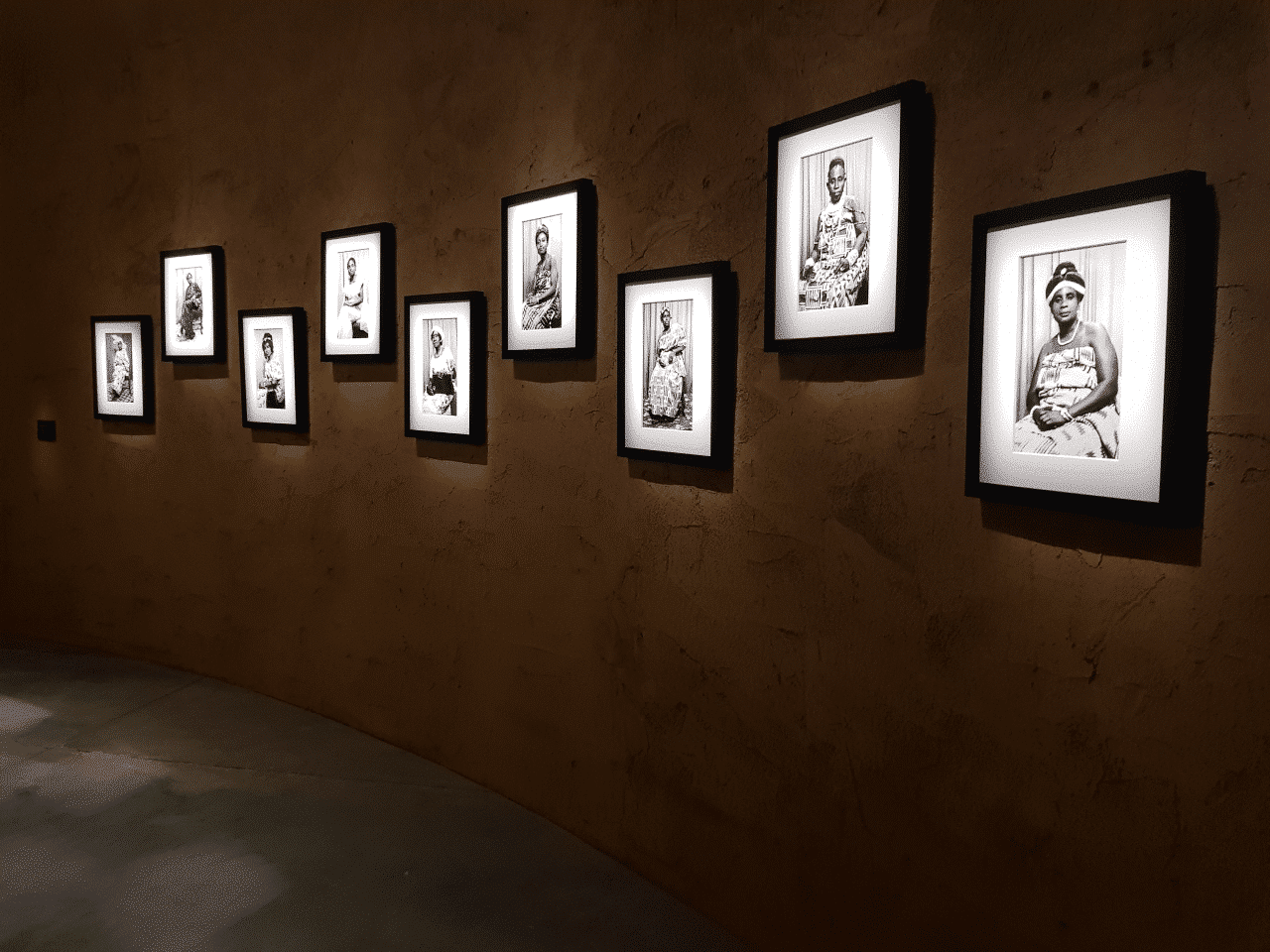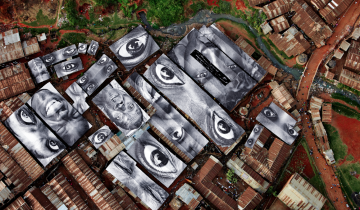Climate change is an existential crisis faced by humanity, with its far-reaching impacts being felt globally. In recent years, it has become increasingly clear that art plays a crucial role in raising awareness and inspiring action to address this pressing issue. African artists, in particular, have emerged as powerful voices in the fight against climate change, using their creative talents to bring attention to the unique challenges faced by the continent. In this essay, we explore the various ways in which African artists are combatting climate change through art, highlighting the significance of their work and the potential for art to inspire collective action and policy changes.
As the world grapples with the devastating effects of climate change, Africa is disproportionately affected due to its geographical location, economic challenges, and limited adaptive capacities. The continent is experiencing increased droughts, floods, and other extreme weather events, which exacerbate existing vulnerabilities and threaten the livelihoods of millions. Climate change has also disrupted agriculture and food security, leading to food shortages and malnutrition, and posing serious risks to biodiversity and ecosystems. Consequently, the urgency for effective climate action has never been greater.
In response to these pressing challenges, African artists have emerged as agents of change, using their creative talents to address climate change and its impacts on their communities. Through various mediums such as visual art, music, performance art, and literature, these artists are raising awareness about the severity of the issue and inspiring action among local and global audiences. By integrating scientific data, technological innovations, and environmental activism into their work, African artists are not only bringing attention to the urgency of the crisis but also demonstrating the power of art as a tool for social transformation.

The Unique Challenges Faced by Africa Due to Climate Change
- Increased Droughts, Floods, and Other Extreme Weather Events Climate change has led to more frequent and severe extreme weather events in Africa, causing devastating consequences for the continent’s people and environment. Prolonged droughts, for instance, have resulted in crop failures, livestock deaths, and water scarcity, exacerbating poverty and hunger. In contrast, intense floods have destroyed homes, infrastructure, and farmland, displacing millions and causing significant economic losses.
- Disruption of Agriculture and Food Security As the majority of Africa’s population relies on agriculture for their livelihoods, climate change poses a significant threat to the continent’s food security. Rising temperatures, erratic rainfall, and extreme weather events have led to reduced crop yields and increased crop failures. Moreover, climate change has facilitated the spread of pests and diseases, further threatening agricultural production and food availability.
- Threats to Biodiversity and Ecosystems Africa is home to some of the world’s most diverse and unique ecosystems, but climate change is jeopardizing their survival. Changes in temperature and precipitation patterns, coupled with extreme weather events, are causing habitat loss, species migration, and extinction. This loss of biodiversity has serious implications for ecosystem services, such as water purification, pollination, and carbon sequestration, which are essential for human well-being and sustainable development.
The Role of African Artists in Addressing Climate Change
- Raising Awareness Through Visual Art African artists have been using their creative talents to raise awareness about the impacts of climate change on their continent. These artists produce climate-themed artwork and installations that captivate audiences and encourage reflection on the environmental crisis. For instance, Nigerian artist Bright Ugochukwu Eke’s installation “Acid Rain,” which features corroded metal sculptures suspended from the ceiling, represents the devastating effects of pollution on the environment and human health.The impact of visual art on public perception and understanding of climate change cannot be underestimated. Through their work, African artistshave the power to evoke emotions and foster empathy, thus making the issue more tangible and urgent for viewers. By incorporating climate change themes into their artwork, these artists play a crucial role in raising awareness and inspiring action.
- Inspiring Action Through Music and Performance Art Music and performance art have long been used as powerful tools for social change, and African artists are no exception in their efforts to combat climate change. Renowned Kenyan musician and activist Eric Wainaina, for example, uses his music to address environmental issues, including deforestation and climate change. His song “Daima” has become an anthem for environmental awareness in Kenya, inspiring listeners to take action and protect their environment.Similarly, in South Africa, the collective “Dance for a Changing World” creates performances that explore the connection between humans and the natural world, emphasizing the urgent need to address climate change. By engaging audiences emotionally through music and performance, African artists can inspire action and contribute to the broader fight against climate change.
- Advocacy Through Literature and Storytelling Literature and storytelling play a vital role in preserving cultural heritage and inspiring change, particularly when it comes to addressing complex issues like climate change. African authors are increasingly incorporating climate change themes into their novels, poems, and short stories, using the power of storytelling to raise awareness and inspire action.Nigerian author Nnedi Okorafor’s novel “Lagoon” is a case in point. Set in Lagos, the book tells the story of an alien encounter that brings ecological change to the city. Through its narrative, the novel highlights the importance of environmental stewardship and the consequences of inaction in the face of climate change.
Collaborative Efforts and Cross-Disciplinary Approaches
- Art-Science Collaborations and Initiatives The integration of scientific data into art is an effective way to communicate complex climate change concepts to a broader audience. African artists are increasingly collaborating with scientists to create artworks that not only engage viewers aesthetically but also educate them about the underlying science. For example, the Ethiopian artist Robel Temesgen worked with climate scientists to develop a series of paintings depicting the relationship between climate change and traditional rainmaking rituals in Ethiopia.Encouraging dialogue between artists and scientists is essential in developing innovative solutions to address climate change. Art-science collaborations can lead to a more comprehensive understanding of the issue and inspire new ways of thinking about the problem and potential solutions.
- Intersection of Art, Technology, and Environmental Activism African artists are also exploring the intersection of art, technology, and environmental activism in their efforts to combat climate change. Kenyan artist and activist Cyrus Kabiru, for instance, creates unique eyewear sculptures from electronic waste to raise awareness about the environmental impact of e-waste disposal. By combining artistic expression with technological innovation, these artists not only draw attention to climate change but also promote sustainable practices and environmental responsibility.Social media and digital platforms play a significant role in promoting climate-focused art, allowing African artists to reach a global audience and connect with like-minded individuals and organizations. This increased visibility can lead to greater support for their work and amplify their impact in the fight against climate change.
- International Exhibitions and Festivals Showcasing African Climate-Focused Art Global events such as the Venice Biennale and the Cape Town Art Fair have increasingly showcased African climate-focused art, amplifying African artists’ voices and bringing attention to the unique challenges faced by the continent. These international exhibitions and festivals provide a platform for African artists to share their work with a wider audience, fostering collaboration among artists, activists, and policymakers from around the world.By participating in global events, African artists can build networks and engage in cross-cultural exchanges,
contributing to a more robust and diverse global dialogue on climate change. These opportunities also serve to highlight the importance of incorporating diverse perspectives and experiences in the fight against climate change, emphasizing the need for international solidarity and cooperation.
As we delve deeper into the various ways African artists are combatting climate change through art, it is essential to highlight specific case studies that exemplify the diverse range of artistic mediums and approaches employed by these artists.
- Aïda Muluneh – “Water Life” (Photographer, Ethiopia) Ethiopian photographer Aïda Muluneh’s series “Water Life” explores the impact of water scarcity on the lives of women in Africa. Through striking images that depict women carrying water and navigating arid landscapes, Muluneh raises awareness about the importance of water conservation and the need for sustainable water management practices. Her work also highlights the disproportionate burden faced by women in securing water resources for their families and communities.
- Pascale Marthine Tayou (Visual Artist, Cameroon) Pascale Marthine Tayou’s art often focuses on environmental issues, particularly the impact of climate change and pollution on his native Cameroon. His installation “Plastic Tree,” for instance, features a large tree covered in plastic bags, drawing attention to the issue of plastic waste and its devastating effects on ecosystems. Tayou’s work urges viewers to reconsider their consumption habits and to embrace more sustainable practices.
- Fabrice Monteiro (Photographer, Senegal-Belgium) Fabrice Monteiro’s striking photo series “The Prophecy” showcases the effects of pollution and environmental degradation on the landscapes and people of Senegal. Collaborating with costume designer Doulsy (Jah Gal), Monteiro created haunting images featuring spirits wearing elaborate costumes made from trash and debris. These spirits represent the consequences of human actions on the environment, urging viewers to confront the reality of their impact and take action to protect the planet.
- Mbongeni Buthelezi (Visual Artist, South Africa) South African artist Mbongeni Buthelezi has developed a unique art form by using discarded plastic materials to create intricate and visually stunning paintings. Through his work, Buthelezi not only repurposes waste materials but also raises awareness about the issue of plastic pollution and the need for recycling and sustainable waste management practices.
- Aïssa Maïga – “Marcher sur l’eau” (Above Water) (Filmmaker, Senegal) Senegalese filmmaker Aïssa Maïga’s documentary “Marcher sur l’eau” (Above Water) explores the impact of climate change on water resources in Africa. The film follows the lives of people living in communities affected by water scarcity, highlighting their resilience and adaptability in the face of these challenges. Maïga’s work brings attention to the human cost of climate change and the importance of sustainable water management.
- Adama Ndiaye – Founder of Dakar Fashion Week (Fashion Designer, Senegal) Adama Ndiaye, the founder of Dakar Fashion Week, has been instrumental in promoting sustainability and environmental consciousness in the fashion industry. Ndiaye’s designs often incorporate eco-friendly materials and traditional African textiles, emphasizing the importance of preserving cultural heritage while embracing sustainable fashion practices. Through Dakar Fashion Week, Ndiaye encourages emerging African designers to adopt environmentally responsible design principles and contribute to the global effort to combat climate change.
- Porky Hefer – “Plastocene – Marine Mutants from a Disposable World” (Contemporary Art Designer, South Africa) South African artist Porky Hefer’s installation “Plastocene – Marine Mutants from a Disposable World” features a series of large, colorful sculptures made from recycled plastic waste. These sculptures, which resemble mutated marine creatures, serve as a stark reminder of the impact of plastic pollution on marine life and ecosystems. Hefer’s work encourages viewers to reconsider their plasticconsumption habits and to take action to reduce plastic waste.
- Gonçalo Mabunda (Sculptor, Mozambique) Mozambican artist Gonçalo Mabunda creates powerful sculptures using decommissioned weapons and ammunition collected from the country’s civil war. By transforming these symbols of violence into artworks that represent hope and resilience, Mabunda raises awareness about the environmental impacts of armed conflict, including deforestation, land degradation, and pollution. His work also serves as a reminder of the importance of peace and stability in achieving sustainable development and addressing climate change.
- Wangechi Mutu (Visual Artist, Kenya) Kenyan artist Wangechi Mutu explores themes of environmental degradation and climate change through her multimedia artwork. Her series “The End of Eating Everything” features collages and animations that depict a dystopian world ravaged by consumption and waste. Through her work, Mutu urges viewers to confront the consequences of unsustainable practices and consider the need for more responsible consumption habits.
- Rashid Diab (Painter, Sudan) Sudanese painter Rashid Diab uses his artwork to explore the relationship between humans and their environment, often depicting the impact of climate change on landscapes and communities in Sudan. His paintings serve as visual narratives, telling the stories of people affected by drought, desertification, and other environmental challenges. Diab’s work raises awareness about the urgent need for climate action and adaptation strategies in vulnerable regions like Sudan.
These case studies illustrate the diverse range of artistic mediums and approaches employed by African artists to combat climate change. Their work not only raises awareness about the pressing environmental challenges faced by their communities but also serves as a source of inspiration and hope for audiences worldwide. By supporting these artists and incorporating their unique perspectives into the global dialogue on climate change, we can foster greater understanding, empathy, and action in the fight against this existential crisis.
In conclusion, The significance of African artists in the global fight against climate change is undeniable. Their unique perspectives and contributions, shaped by their experiences on the frontlines of the crisis, bring attention to the pressing challenges faced by their communities and the planet as a whole. Through their work, African artists have the potential to inspire change on a global scale, as they raise awareness, foster empathy, and encourage action to mitigate the devastating impacts of climate change.
The potential for art to inspire collective action and policy changes is immense. Art has the power to influence public opinion, shape social norms, and challenge decision-makers to consider the long-term consequences of their actions. As African artists continue to raise awareness about climate change and advocate for more sustainable practices, their work can contribute to the broader movement for environmental justice and sustainable development.
However, the impact of African artists in combatting climate change is contingent upon the recognition and support they receive from local and international communities. It is crucial that governments, organizations, and individuals invest in climate-focused art initiatives and provide platforms for African artists to share their work with a wider audience. Fostering cross-cultural and interdisciplinary collaborations can help amplify the voices of African artists, leading to innovative solutions and more effective climate action.
The work of African artists combatting climate change through art is an essential component of the global effort to address this existential crisis. By supporting these artists and recognizing their unique contributions, we can inspire collective action, facilitate policy changes, and ultimately, protect our planet for future generations.





 No products in the basket.
No products in the basket.